What is the Jetic Platform?
The Jetic Platform is an integration development tool designed to streamline the process of creating, managing, and deploying software integrations in Kubernetes. It is built on top of Camel K, a lightweight integration framework specifically designed for running serverless and microservice architectures natively in Kubernetes.

With our platform a you can rely on mature open source frameworks to quickly create software integrations, deploy them to Kubernetes, and experience the full reliability and scalability of modern cloud deployments.
Our focus is dedicated to making modern integration development and deployment simpler and faster. Don't believe us? Consider checking our guide 0 to API in 60 seconds(coming soon), where we show you how you can use our platform to create a fully deployed API as a microservice in roughly 60 seconds.
How does the Jetic Platform work?#
While our platform offers a variety of features, we can quickly explain how it works in 3 main steps:
- Building software integrations
- Connecting your Kubernetes clusters
- Deploying your integrations to those clusters
Building Software Integrations#
Within our platform we provide the Camel Studio, an interactive, drag-and-drop environment where you can build software integrations that utilize the Camel K framework. This framework is built on top of Apache Camel and gives you access to hundreds of components to connect to virtually any of your data sources.
The studio also features a resource panel that is full of all kinds of resources that you can add and configure for your integrations. This includes databases, Salesforce connections, custom files, and much more!
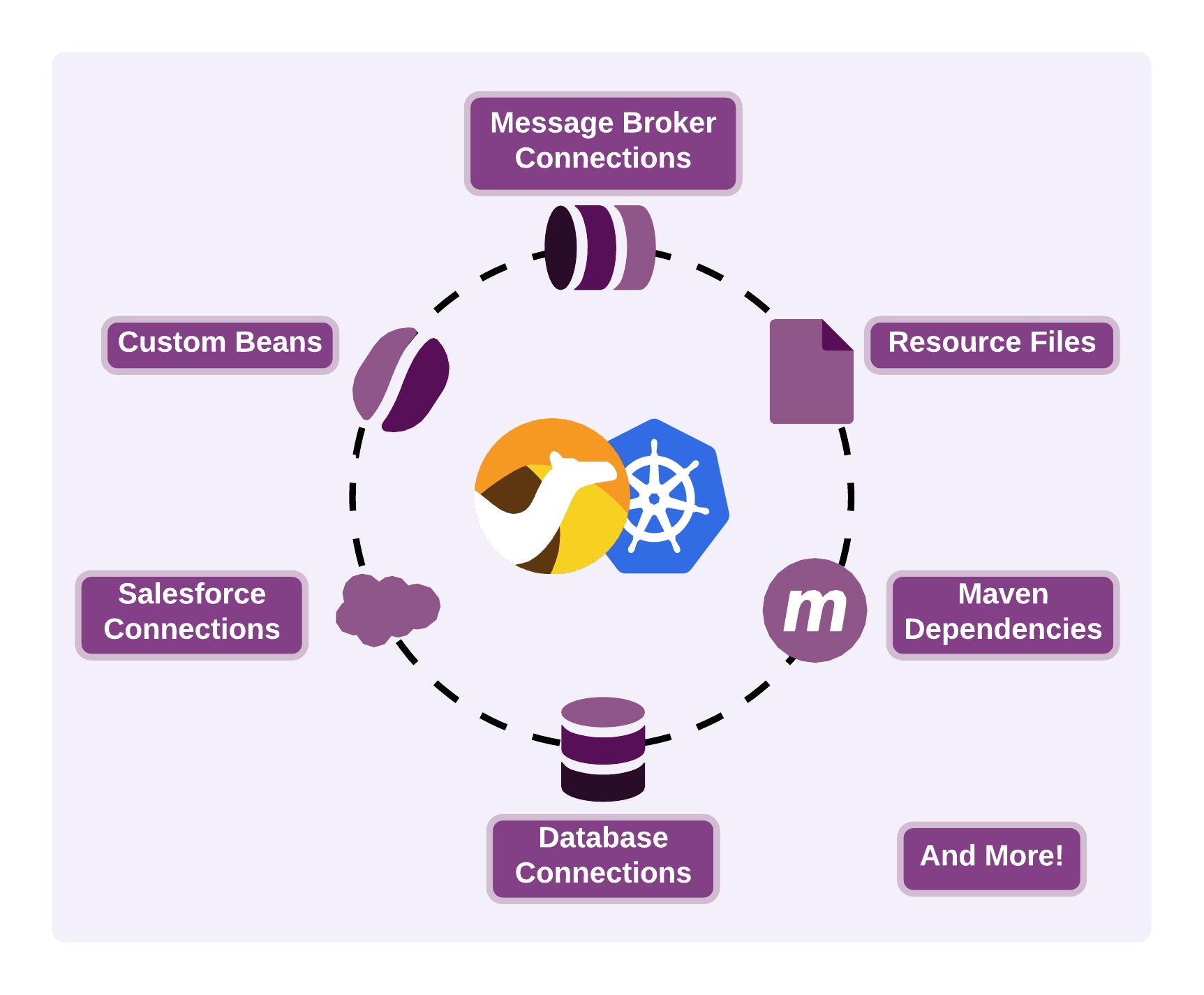
By using our studio there's no need to write any actual integration code, because it's generated completely on your behalf! We take the integrations you build in the studio, bundle it with your resources, and convert it all into ready-to-deploy Camel DSL code.
No matter how simple or complex your integrations need to be, we can take this:
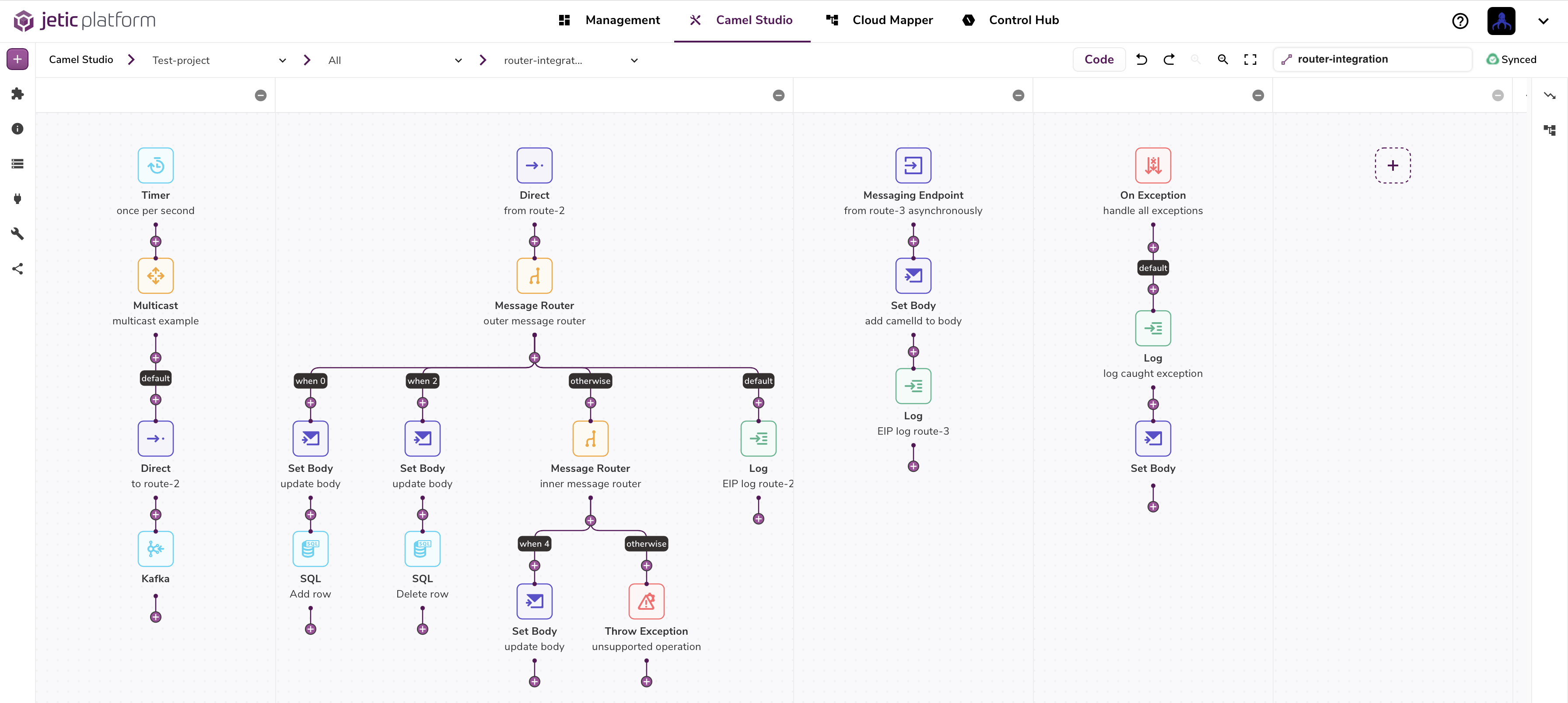
And turn it into deployable, microservice code ready to run natively in Kubernetes:

important
All of the code we generate is available for you to view and even synchronize to your own Git repository. You can learn more about this in our Git Integration documentation.
Connecting your Cluster#
Before deploying the integrations you create in the platform, you must first connect your Kubernetes cluster. This is done with our Camel Bridge, a small microservice which follows the Kubernetes Operator design pattern. It is installed in your cluster and uses the Kubernetes API to manage all of your integrations.

Your Camel Bridge, once installed in your cluster, will communicate with our platform through our secured message broker. It will only send and receive messages relevant for managing your integrations like deployment instructions, health checks, execution logs, and more. Once it receives instructions from our platform, it will use the Kubernetes API to interact with your cluster on your behalf.
note
Because the bridge lives in your cluster and only needs to authenticate to our message broker, there's no need on your end to whitelist any IP addresses, update any firewalls, etc.
The bridge is secured in your cluster with Kubernetes' RBAC (Role Based Access Control) so it has just enough permission to manage the integrations within your cluster. These roles and permissions fully transparent during the installation process.
For more information regarding the Camel Bridge please refer to our Jetic Platform Architecture.
Deploying your Integrations#
Deploying an integration to a cluster could not be simpler. Once you have an integration in our platform that is ready for deploylment, simply select your cluster and deploy with the click of a button!
Your integration and all resources will be bundled and converted into Camel DSL code, sent to your clusters Camel Bridge via our secured message broker, and Camel K will handle the rest!
note
Our platform and Camel K will generate additional Kubernetes resources in your cluster automatically if they are required. For example, if your deployed integration exposes an API then you will have an additional ingress resource to expose your integration created automatically so you don't have to!
Updating an existing deployment is just as simple. Simply make your changes in the Studio, and with the same click of a button you can "Apply" your new changes and see your deployed updates in moments. Depending on how minimal your changes are you may have redployment times within seconds!
Why use the Jetic Platform?#
Our platform is much more than just a way to create and deploy integrations. It's meant to change the way integration development is approached and make managing your integrations simpler and easier than ever.
Once you deploy an integration the work is not done. You'll likely need to monitor your integrations as well as the data flowing through them. Our platform takes this to the next level.
Superior Data Visualization#
Once your integrations are deployed in your cluster, our platform streams both Build & Execution Logs so you can see exactly what's happening with your integrations at every step of the deployment process.

In addition to logs, you can use our Data Visualizer to actually see your data in real time as it passes through your integrations! The Data Visualizer features a "message flow" where you can see how the data actually transforms at every step of your integration.
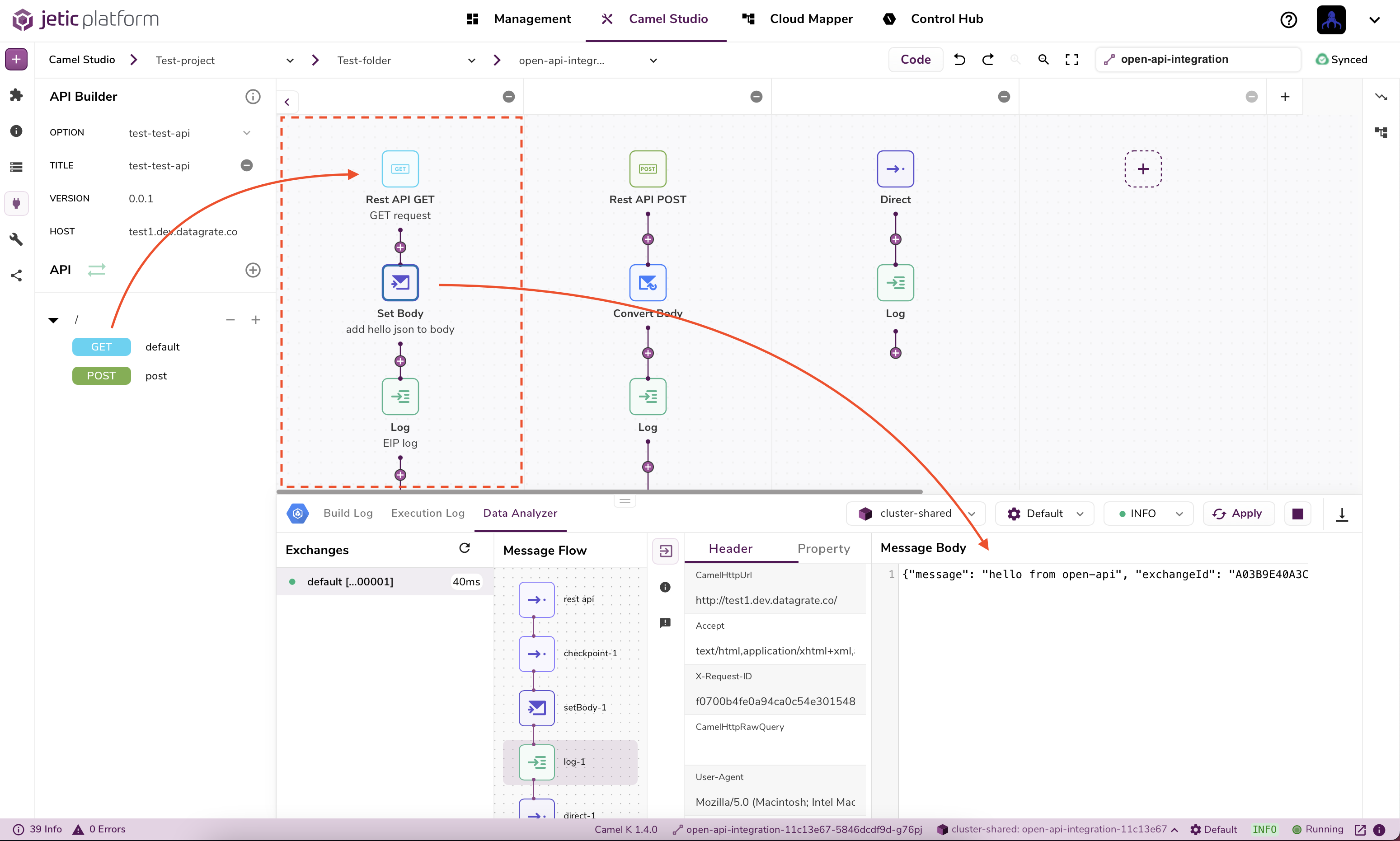
You'll experience a fully transparent view of your data by traveling in time and seeing the headers, properties, message body, and even exceptions that occured as your data flowed through each component of your integration!
Integration Management#
Our platform features an extensive Control Hub where you can fully manage your deployed integrations within the platform. You can view all the integrations that are currently deployed in your clusters, as well as more detailed views of individual deployments.
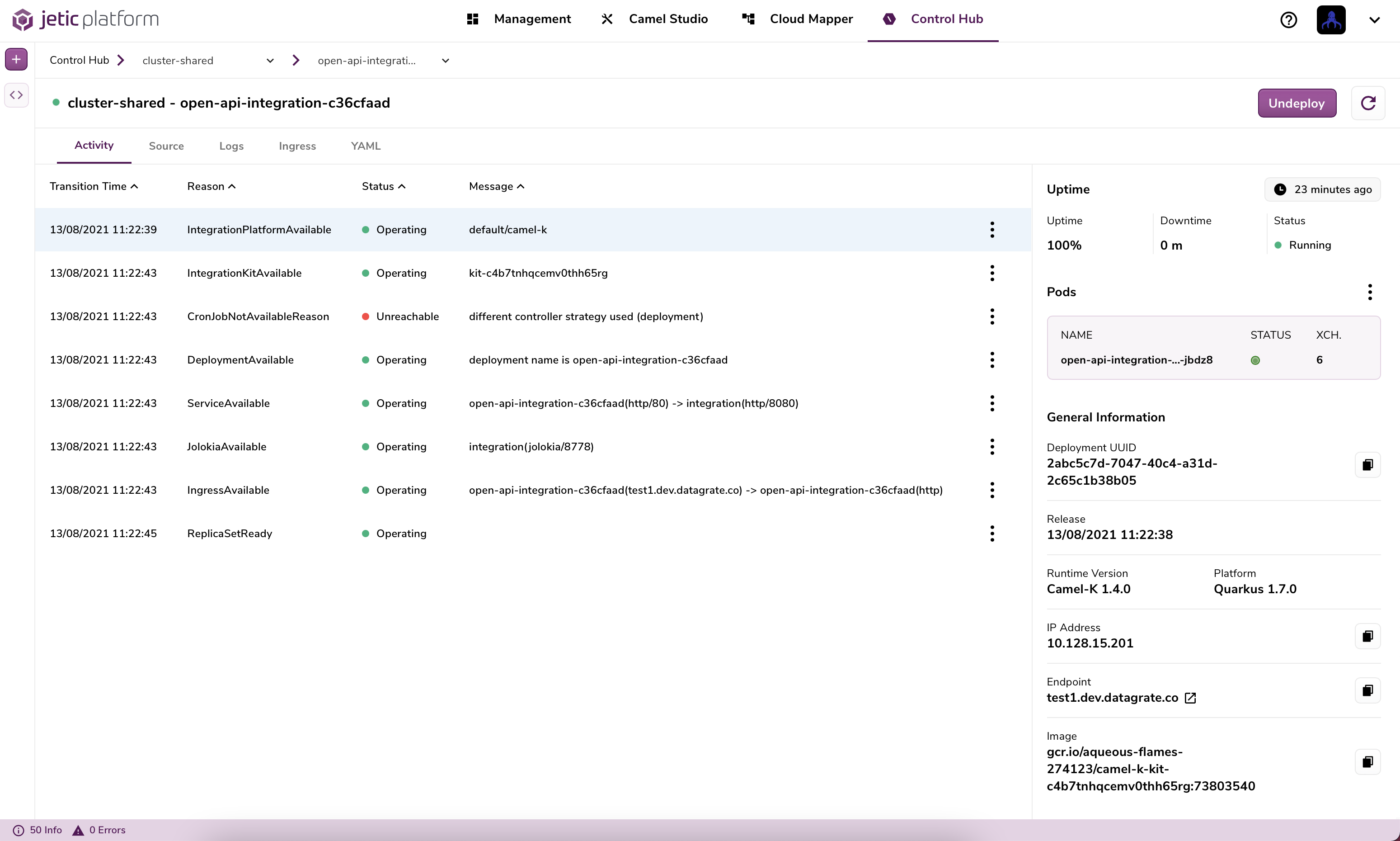
Our platform provides you with virtually all of the integration information within your cluster to make management as transparent as possible. You can deploy and undeploy integrations, stream their logs, view execution uptime and even see the YAML that we create within your Kubernetes cluster!
The Control Hub is a miniature Kubernetes Integration dashboard all on it's own.
No Vendor Lock#
As mentioned earlier, all of the Camel DSL code we generate to deploy your integrations is viewable at any time. To take this a step further, you can configure oour Camel Bridge to connect to your own private Git repository.
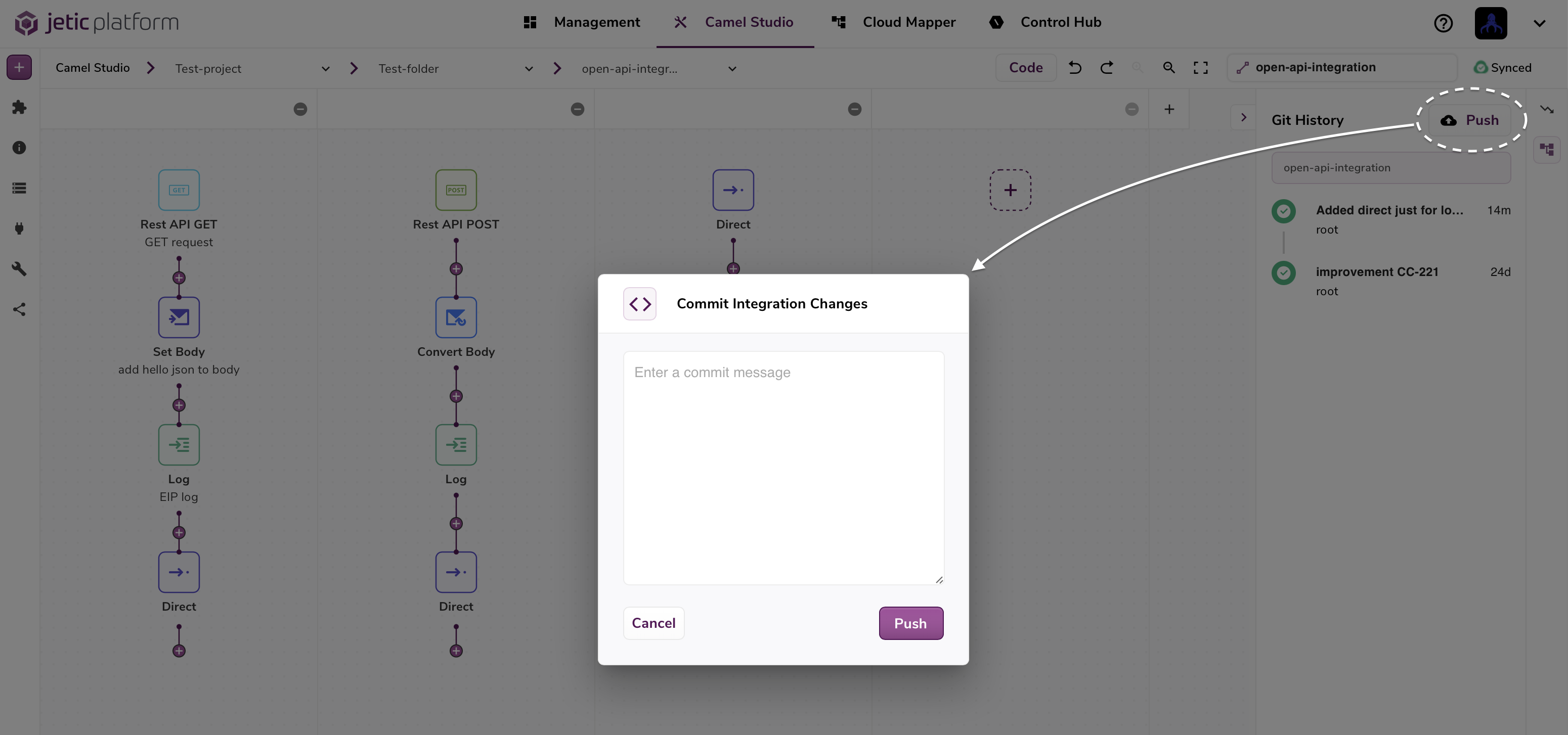
This not only provides version control within our platform, but also allows you to privately store all of the resource code we generate within the platform on your behalf.
If for any reason you choose to take your code with you and leave our platform behind, you're still be able to use all of our generated code by using Camel K within your cluster!
Our platform is also built entirely on open source frameworks which offers another level of transparency in the code base. In addition to transparency you have an entire community backing these open source projects with regular releases and updates.